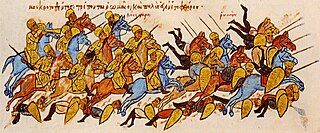This article needs additional citations for verification .(October 2017) |
| Millennium: | 1st millennium |
|---|---|
| Centuries: | |
| Decades: | |
| Years: |
| 422 by topic |
|---|
| Leaders |
| Categories |
| Gregorian calendar | 422 CDXXII |
| Ab urbe condita | 1175 |
| Assyrian calendar | 5172 |
| Balinese saka calendar | 343–344 |
| Bengali calendar | −171 |
| Berber calendar | 1372 |
| Buddhist calendar | 966 |
| Burmese calendar | −216 |
| Byzantine calendar | 5930–5931 |
| Chinese calendar | 辛酉年 (Metal Rooster) 3118 or 3058 — to — 壬戌年 (Water Dog) 3119 or 3059 |
| Coptic calendar | 138–139 |
| Discordian calendar | 1588 |
| Ethiopian calendar | 414–415 |
| Hebrew calendar | 4182–4183 |
| Hindu calendars | |
| - Vikram Samvat | 478–479 |
| - Shaka Samvat | 343–344 |
| - Kali Yuga | 3522–3523 |
| Holocene calendar | 10422 |
| Iranian calendar | 200 BP – 199 BP |
| Islamic calendar | 206 BH – 205 BH |
| Javanese calendar | 306–307 |
| Julian calendar | 422 CDXXII |
| Korean calendar | 2755 |
| Minguo calendar | 1490 before ROC 民前1490年 |
| Nanakshahi calendar | −1046 |
| Seleucid era | 733/734 AG |
| Thai solar calendar | 964–965 |
| Tibetan calendar | 阴金鸡年 (female Iron-Rooster) 548 or 167 or −605 — to — 阳水狗年 (male Water-Dog) 549 or 168 or −604 |

Year 422 ( CDXXII ) was a common year starting on Sunday (link will display the full calendar) of the Julian calendar. At the time, it was known as the Year of the Consulship of Honorius and Theodosius (or, less frequently, year 1175 Ab urbe condita ). The denomination 422 for this year has been used since the early medieval period, when the Anno Domini calendar era became the prevalent method in Europe for naming years.



